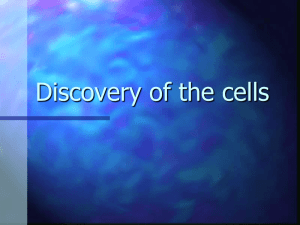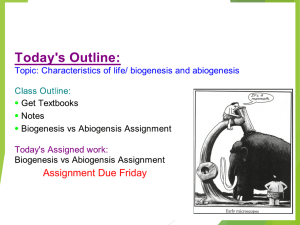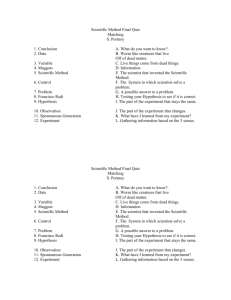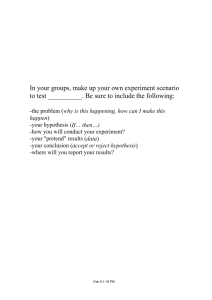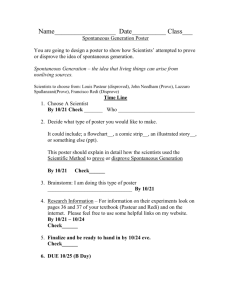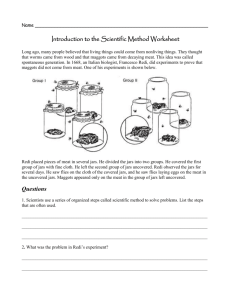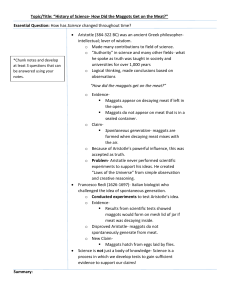Origin of Life ppt notes
advertisement
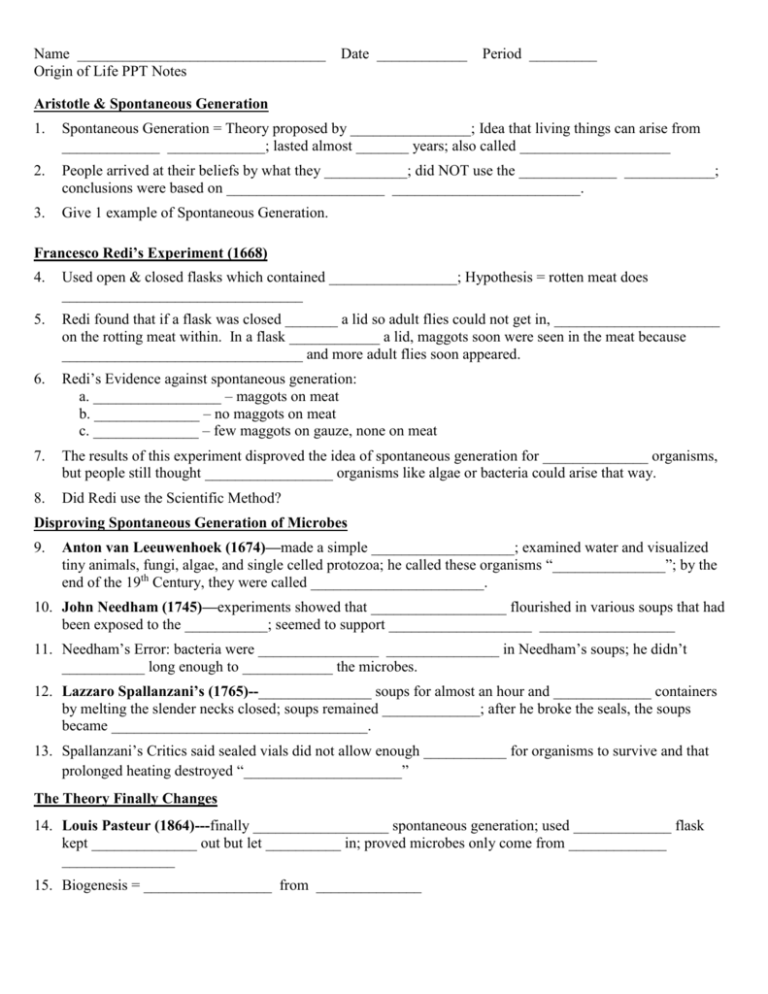
Name _________________________________ Origin of Life PPT Notes Date ____________ Period _________ Aristotle & Spontaneous Generation 1. Spontaneous Generation = Theory proposed by ________________; Idea that living things can arise from _____________ _____________; lasted almost _______ years; also called ____________________ 2. People arrived at their beliefs by what they ___________; did NOT use the _____________ ____________; conclusions were based on _____________________ _________________________. 3. Give 1 example of Spontaneous Generation. Francesco Redi’s Experiment (1668) 4. Used open & closed flasks which contained _________________; Hypothesis = rotten meat does ________________________________ 5. Redi found that if a flask was closed _______ a lid so adult flies could not get in, ______________________ on the rotting meat within. In a flask ____________ a lid, maggots soon were seen in the meat because ________________________________ and more adult flies soon appeared. 6. Redi’s Evidence against spontaneous generation: a. _________________ – maggots on meat b. ______________ – no maggots on meat c. ______________ – few maggots on gauze, none on meat 7. The results of this experiment disproved the idea of spontaneous generation for ______________ organisms, but people still thought _________________ organisms like algae or bacteria could arise that way. 8. Did Redi use the Scientific Method? Disproving Spontaneous Generation of Microbes 9. Anton van Leeuwenhoek (1674)—made a simple ___________________; examined water and visualized tiny animals, fungi, algae, and single celled protozoa; he called these organisms “_______________”; by the end of the 19th Century, they were called _______________________. 10. John Needham (1745)—experiments showed that __________________ flourished in various soups that had been exposed to the ___________; seemed to support ___________________ __________________ 11. Needham’s Error: bacteria were ________________ _______________ in Needham’s soups; he didn’t ___________ long enough to ____________ the microbes. 12. Lazzaro Spallanzani’s (1765)--_______________ soups for almost an hour and _____________ containers by melting the slender necks closed; soups remained _____________; after he broke the seals, the soups became __________________________________. 13. Spallanzani’s Critics said sealed vials did not allow enough ___________ for organisms to survive and that prolonged heating destroyed “_____________________” The Theory Finally Changes 14. Louis Pasteur (1864)---finally __________________ spontaneous generation; used _____________ flask kept ______________ out but let __________ in; proved microbes only come from _____________ _______________ 15. Biogenesis = _________________ from ______________ Name _________________________________ Origin of Life PPT Notes Date ____________ Period _________ Francesco Redi: Francesco Redi was an Italian physician and scientist born in 1626. He was also a prolific author, writing both creatively and scientifically. He produced the groundbreaking book "Experiments on the Origins of Insects" in 1668. Redi's Theory: During Redi's time a common theory was abiogenesis, which asserted that living organisms can spontaneously grow from dead or inorganic matter. Francesco's work to disprove abiogenesis would later play a crucial role in the development of cell theory. Experiment: The supporting argument for abiogenesis at the time stemmed from the appearance of maggots on rotting meat; it was thought that the meat was turning into maggots. Redi performed a series of experiments with meat, leaving some meat covered and some uncovered. He discovered that maggots only appeared on the uncovered meat. He also spent time studying the maggots and realized that they eventually turned into flies. His research didn't garner much respect at the time, but it did serve to cast doubt on the spontaneous generation theory. Read more: Francesco Redi's Cell Theory | eHow.com http://www.ehow.com/facts_7420090_francesco-redi_s-cell-theory.html#ixzz23CSPCqUp Spontaneous Generation: For most of the history of spontaneous generation, notable inquirers were not focused so much on the origin of life (to many that was left up to a deity) as the issue of life springing at random, fully formed from nonliving matter. Francesco Redi cast aspersions upon the idea as early as the 17th century, but it took until French chemist Louis Pasteur in 1859 to sound the death knell. Pasteur boiled meat in a flask (since it was believed that life arose from rotting meat), heated the neck to make it pliable, and bent the neck in an S shape. The idea was that air could get out but microorganisms could not get in; they'd settle in the neck of the flask. He found that no organisms were spontaneously created. Instead, they entered only when Pasteur straightened the neck and allowed them in. Read more: The Theories of Spontaneous Generation and Biogenesis | eHow.com http://www.ehow.com/about_6296527_ theories-spontaneous-generationbiogenesis.html#ixzz23CT3QLCH

